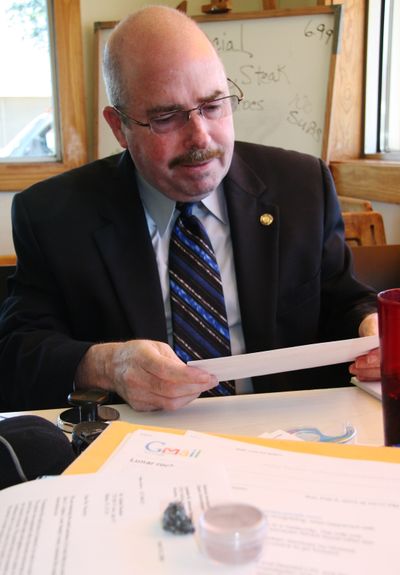Houston man hunts missing moon rocks

BUFFALO, Texas – The dark suit and tie Joe Gutheinz wore set him apart from other customers inside a Texas eatery where the usual attire is jeans and cowboy hats.
An appetite for down-home cooking wasn’t what brought the former NASA investigator to the Pitt Grill recently. He was on a quest to identify and maybe recover some of the rarest treasure brought to Earth and then lost: moon rocks.
“We’re educating the states and countries of the world about how much they’re worth on the black market, and we need to increase the security in museums and need to put them back on display,” Gutheinz said.
The rock samples were collected by the dozen American astronauts who walked on the lunar surface between 1969 and 1972. U.S. states, territories, the United Nations and foreign governments received them as gifts. The samples, which also were loaned to museums and given to scientists for research, range from dust particles to tiny pebbles.
“A lot of them are in storage. And we need to put them in an inventory control system. And that’s what’s really lacking,” said Gutheinz, a Houston lawyer who also teaches college classes in investigative techniques.
At the Pitt Grill in Buffalo, Texas, Gutheinz was meeting a former toy manufacturer from Colombia who contends his piece of the moon is from the more than 48 pounds of material collected in 1969 by Apollo 11 astronauts Neil Armstrong and Buzz Aldrin on the first manned lunar landing mission.
Rafael Navarro’s asking price on eBay for dust scraped from his rock is $300,000. The dust weighs 0.03 grams, roughly the same as a grain of rice.
Navarro, 67, said he didn’t fear possible fallout from illegally possessing what could be federal government property or risking fraud charges for selling something as a moon rock when it may not be.
“NASA can’t prove they ever had this moon rock,” he said.
That part may be true.
NASA, which keeps its collection of rocks at Johnson Space Center in Houston and a facility in New Mexico, has confirmed the lack of oversight and promised to tighten controls, concurring with a critical audit report last December from its own Office of Inspector General, where Gutheinz worked as a senior agent. He left NASA in 2000 after 10 years.
In the days of the Apollo space program, the idea of not returning to the moon wasn’t a concern. So it was believed that more and more rock samples would come, too.
But it’s been 40 years since astronaut-geologist Harrison Schmitt and Apollo 17 mission commander Gene Cernan in 1972 became the last men to walk on the moon. The total amount of collected lunar materials has amounted to 842 pounds, including 2,196 individual rock, soil and core samples. Those subsequently have been split into about 140,000 subsamples, according to NASA.
Gutheinz was responsible for the 1998 “Operation Lunar Eclipse” sting at NASA and intercepted a $5 million sale of a moon rock President Richard Nixon gave to the government of Honduras after the last Apollo mission.
Of the 270 moon rocks given to nations around the world as gifts, Gutheinz said 160 are unaccounted for, stolen or lost. Another 18 moon rocks from Apollo 11 and six from Apollo 17, gifted to U.S. states, also are unaccounted for or missing.
Gutheinz and students from his classes are responsible for directly or indirectly recovering 79 moon rocks since 2002, including lunar rocks presented to several governors.
A retired dentist had the West Virginia rock, which Sandy Shelton, one of Gutheinz’s former students, tracked down. “I am very pleased that I was able to give back to West Virginia what was rightfully theirs, and to know that the young generation will have a piece of history to look at from the moon,” said Shelton, who lives in Minneapolis.